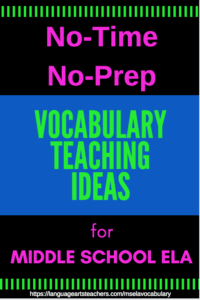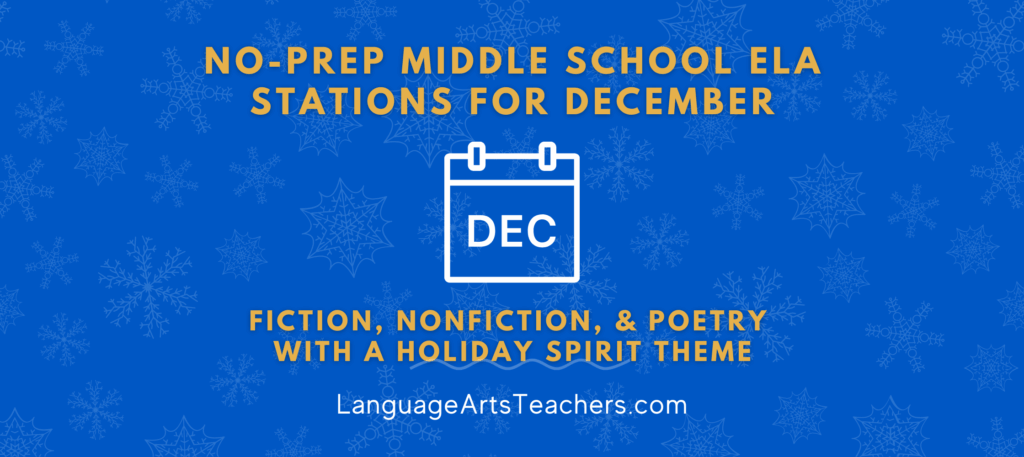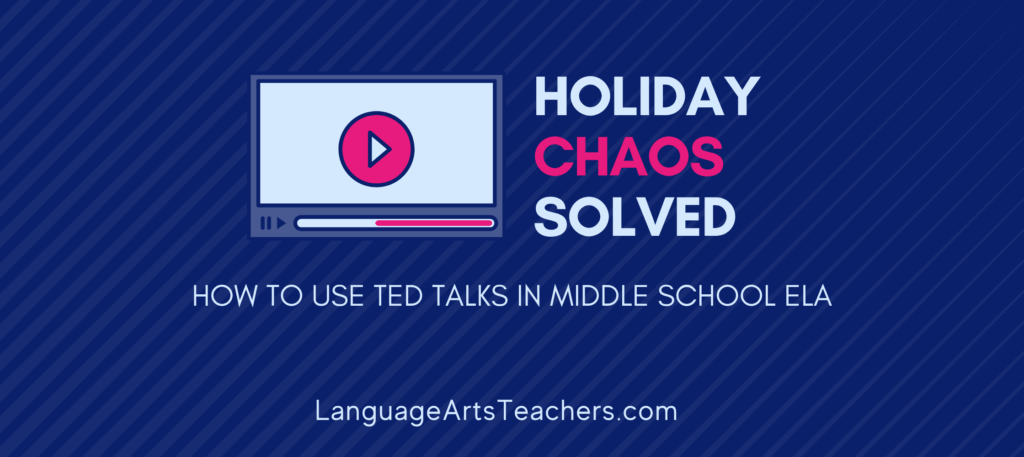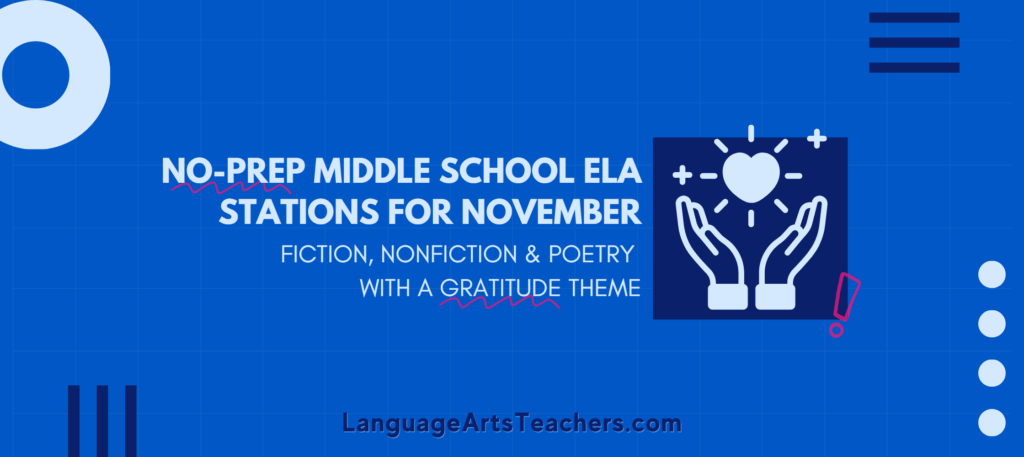Teaching Vocabulary in Middle School ELA
… without planning even MORE lessons
… without taking up even MORE class time
… without drowning in MORE grading
I’ve pulled together some of my most realistic, teacher AND student-friendly options for embedding vocabulary instruction and vocabulary practice into your middle school ELA classroom.
It’s a question I get all the time from members of my lesson plan community and from my free Face Book group so I KNOW it’s a major problem we’re all struggling with!
Personally, I’ve been through the ringer over the past 17 years of teaching when it comes to programs, and units, and systems of vocabulary instruction: workbooks, school-mandated programs, online vocabulary systems, etc.
It’s insane when you have barely 45 minutes to teach reading, writing, grammar, vocabulary, speaking, listening…
So the goal is to embed those skills as much as possible in a way that makes sense and in a way that doesn’t take up tons of time.
Here’s the BEST most EFFICIENT two-fold approach to teaching vocabulary in the middle school ELA classroom, and it addresses TWO MAIN ISSUES students struggle with:
Academic & Domain-Specific Vocabulary
– Focus on academic/domain-specific vocabulary (think of the kinds of words students see in “test” questions all the time that make them ask you, “What does this question mean?” or “I don’t get what it’s asking”.
So often, it’s because they don’t understand that genre-specific language: convey, illustrate, exemplify, argument, etc. And they don’t understand the sentence structure of the formal questions, either.
If you need ideas on how to get your students speaking, reading, and writing with academic, domain-specific vocabulary and sentence structure (so they learn to understand what questions are asking), the you’ll want to download the “Tents for Talking” pack by clicking the blue button below!
The Tents for Talking pack is a collection of one-page documents, one for each major genre, that fold into paper “tents” for your students to use to respond to what they’re reading. Each tent contains academic terms, standardized testing sentence stems, and prompts worded in those formal ways that often trip up our students.
Place one tent on each table or give one to each pair or small group of students.
Model with them how to use the stems on the tents. Read them out loud and use them together to get the ideas flowing and to help students really own their own learning as they read, write, and talk to each other in academic ways.
These tents are easy to use every single day (all major genres included!) so you can quickly stop where you are, and tell students to “turn and talk for 90 seconds about what we’ve read so far.” This is when they’ll look at both sides of the tent, choose a vocabulary term or a sentence stem that contains the terms, and use them as jumping off points to engage in a quick discussion about the reading.
These tents also do double-duty as “exit tickets” that you never have to think about! Imagine having maybe five minutes left in class and being able to say, “For today’s exit ticket, choose one sentence from the tent and use it to write a response about the reading today.” Each sentence stem on the tent is specific enough to merit a decent response for your students to go with, and there are plenty of stems on each tent so students have a choice on which one they want to use.
For more advanced students, simply have them write a paragraph response using any two or three stems from the tent and then elaborating or explaining the connections they see between the sentence stems and the reading material.
Click the button below to grab your free pack of Tents for Talking!
Vocabulary-in-Context
– Focus on new vocabulary as you come across it in various reading tasks. Talk about the context clues that can help students “get the gist” or get the overall meaning so they can move on with reading instead of having to stop all the time to look it up.
In other words, you’re teaching vocabulary in a way that’s consistent yet unplanned (unless you read ahead of time and choose a word or two you think they’ll struggle with).
Then, that new word or new words can be placed on a “word wall” or in students’ writing journals and you can make them start using those new words in their own writing
For Example: “Hey, we’ve added 7 new words to our word wall this week. When you respond to the questions today, choose any three of them to add into your writing. Circle them so I can easily see which ones you chose to use.”
Why It’s So Efficient
Ok, so both of those ideas I just laid out require little-to-no prep time on your part, and they work well because it’s embedded into what you’re already doing.
They’re simple, teachable moments waiting to happen.
Just in case someone wants you to justify how you’re teaching vocabulary, you simply say that it’s “student-driven” and that it’s something you do every day as part of your reading and writing strategy.
Then you can pull out a student’s writing journal where they record new words you all come across in the reading, or you can point to the word wall, or you can refer to a student’s written response that shows them using the new terms you’re encountering all the time.
What To Do Next
Grab my entire pack of Tents for Talking (all genres!) by clicking the button below to get started with implementing the consistent use of academic vocabulary into your classroom without taking up extra time.
Then, join thousands of us in our free Middle School ELA Teachers Face Book Group to let us know how it’s going and what we can do to help you from there!





